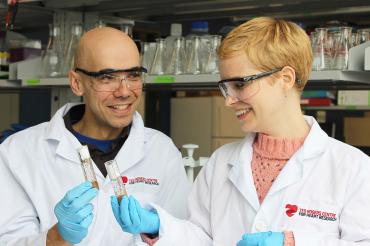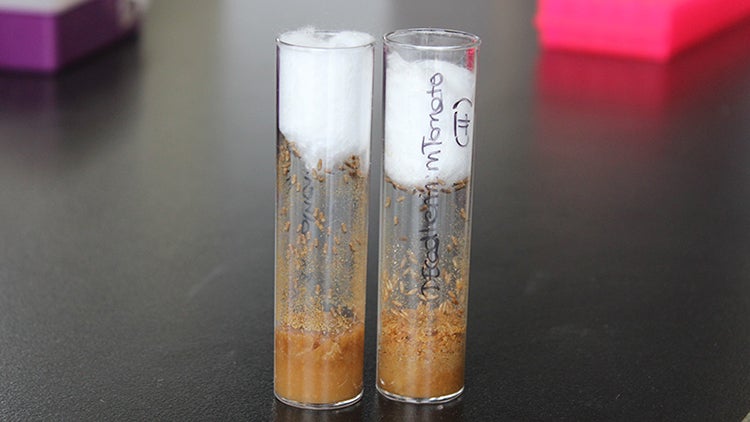U of T researchers uncover mechanism of scar-free wound healing in fruit fly embryos

Published: April 23, 2018
Stitches help deep cuts heal, but can leave a scar. Now, a new study conducted by a team of researchers at the University of Toronto may help scientists and medical professionals move toward scar-free wound repair.
Their paper, published in Nature Physics on Monday, describes the process by which two proteins generate physical forces to drive repair at the cellular level in fruit fly embryos, and how they result in wound healing that leaves no scars.
“Fruit flies are more like us, in some ways, than people think,” said Rodrigo Fernandez-Gonzalez, an associate professor at U of T’s Institute of Biomaterials and Biomedical Engineering (IBBME), the Canada Research Chair in Quantitative Cell Biology & Morphogenesis, and the supervising researcher behind this study.
“There are many human genes that have a counterpart in these insects that we can study. This is amazing because, in fruit fly embryos, we can observe how cells behave in real time inside a living organism, which is not something we can do – ethically or practically – in humans.”
In their study, the team looked at two proteins found in Drosophila melanogaster (fruit fly) embryos that accumulate at wound margins. Using a combination of experimental, quantitative microscopy techniques and mathematical modelling, they were able to observe and record how two proteins – actin and myosin – distribute in a non-uniform fashion to induce contractile forces at wound edges.
They were also able to see how the non-uniform distribution of these proteins generated and transmitted mechanical signals that helped the cells around the wound communicate with each other and co-ordinate their movements to drive efficient healing.

The research team looked at two proteins found in fruit fly embryos and how they helped cells around wounds drive efficient healing (photo by Luke Ng)
“This study has changed our understanding of embryonic wound healing, demonstrating that the actomyosin protein network around the wound is not uniformly distributed but rather a dynamic structure,” said Teresa Zulueta-Coarasa, a PhD student in Fernandez-Gonzalez’s group and the first author of this study. “Our work may shed light into why applying certain patterns of physical forces to wounds facilitates healing.”
Read the research in Nature Physics
Their results could also enhance efforts to reduce certain occurrences of heart failure. In cases where a person experiences a heart attack, the resulting scar tissue from the natural repair process can stiffen and reduce the capacity of the heart to pump blood.
“Our understanding of how wounds can repair without scarring in fruit fly embryos could lead to the development of interventions that prevent scarring and subsequent chances of heart failure,” said Fernandez-Gonzalez, who is also a principal investigator in the translational biology and engineering program, U of T’s component of the Ted Rogers Centre for Heart Research.
The research was supported by the Natural Sciences and Engineering Research Council of Canada, the Canada Foundation for Innovation, the Ontario Ministry of Economic Development and Innovation, the Ted Rogers Centre for Heart Research TBEP Seed Program, and the Canada First Research Excellence Fund - University of Toronto Medicine by Design.



